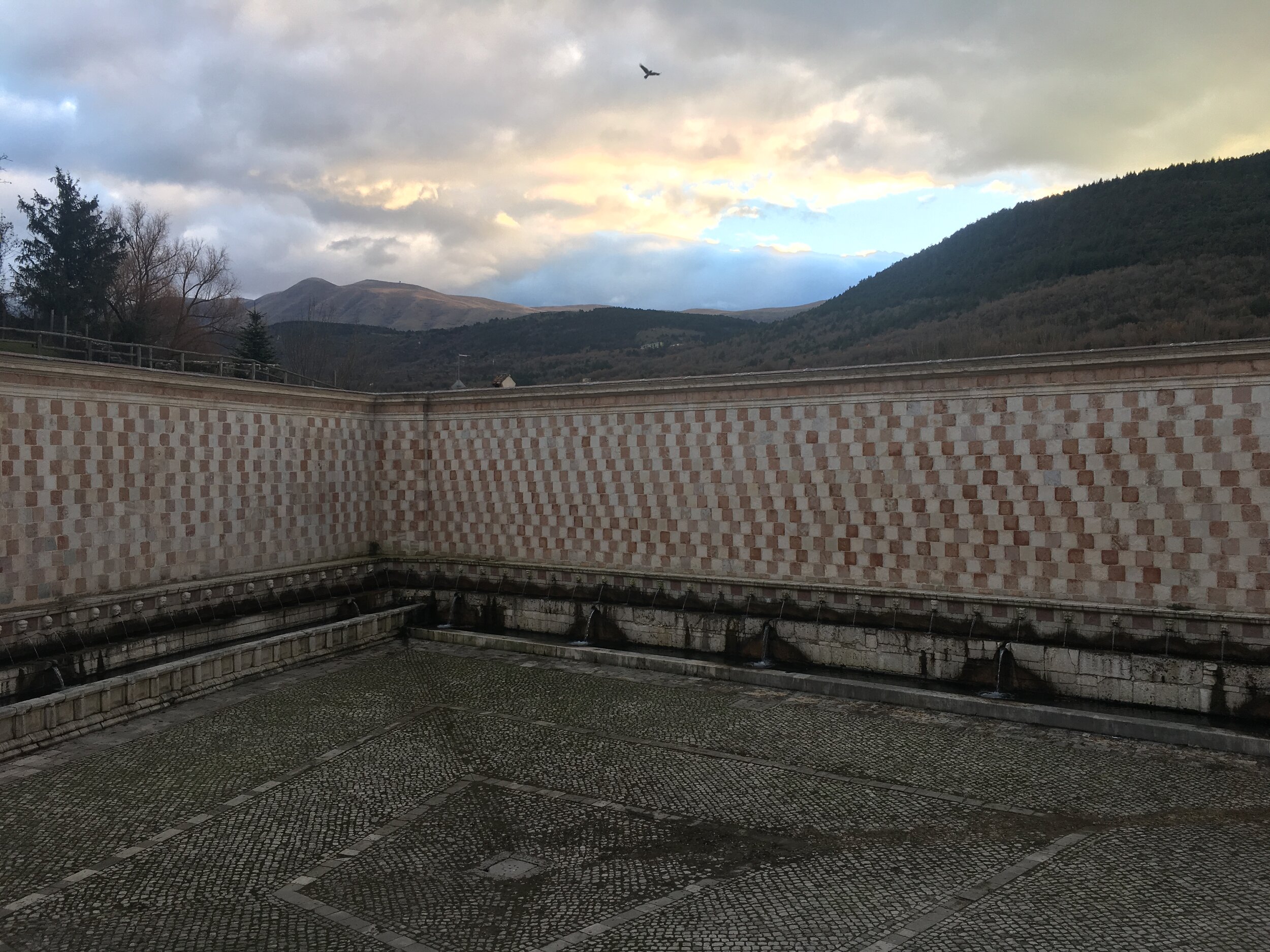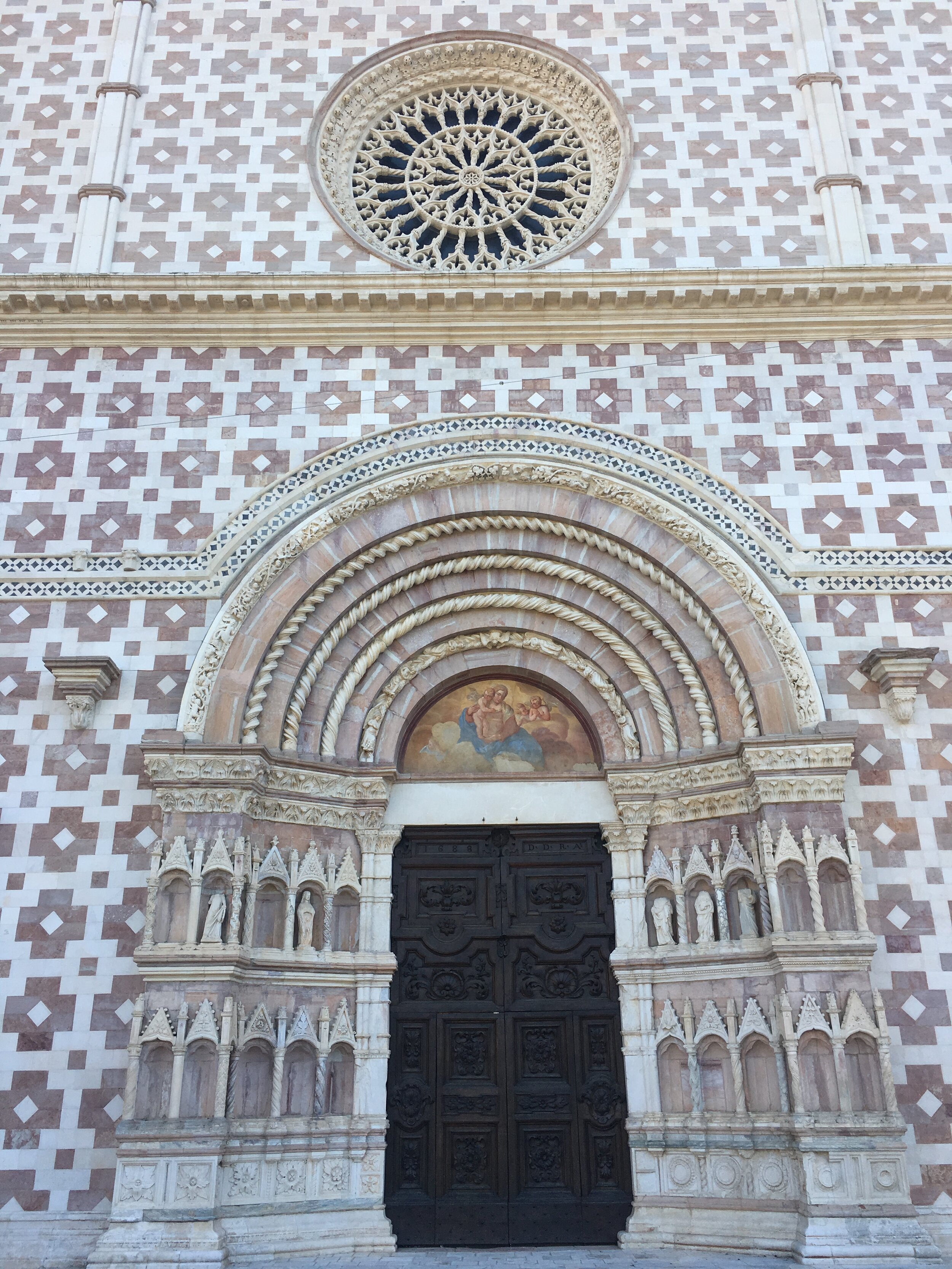Spots in L’Aquila
A good starting place to explore the city of L’Aquila is the Piazza Duomo. The namesake is the 13th century cathedral, which has been damaged in earthquakes multiple times throughout the last centuries, but as you can see, it has not been fully restored after the quake in 2009. The fontana vecchia, also featured in the regional cover photo, is originally from the 13th century but was restored between 1929-1932. When I visited the city in early December, there was a nice Christmas market set up in this square. From here, you can walk to both spots that I recommend.
La fontana delle 99 cannelle
Construction on this fountain began in 1272, and the true inspiration for the creation is still unknown. The most popular story is that the 99 spouts represent 99 ‘castles’ from the surrounding area that came together to found the city of L’Aquila in the late medieval period. There were originally only 93 fountains, but 6 more were added later, and the number of founding medieval castles was probably closer to 70, but still. The pink and white stones in a sharp geometric design with mountains hanging above and continuous water springing forth from the mouths of 99 unique gargoyles is a sight to behold. You can have a true sensory experience especially if there are no other tourists around.
Santa Maria di Collemaggio
Also featuring pink and white geometric designs is the jewel of the Abruzzo region, the Santa Maria di Collemaggio. Aesthetically, the church is striking with three rose windows and three arched doorways creating a harmonic symmetry, especially nestled in with the green grass below and blue sky above. Like other important landmarks in L’Aquila the church is from the 13th century. Specifically, the church was founded in 1287 when Pietro from Morrone who had also founded the Celestine Order of monks was passing through this area, slept on the hill the Colle di Maggio, and had a dream that the Virgin Mary asked him to build a church here. The Celestines bought the land and built this church, and in 1294 Pietro from Morrone became Pope Celestine V, crowned in this very church. Many scholars believe the tradition of the Jubilee started here with the "Celestinian Forgiveness” in which sins were pardoned for those who visited the church. Pope Celestine V is famous for being one of the few popes to resign from the job; in his case, after only 5 months. He is buried in this very cathedral.



